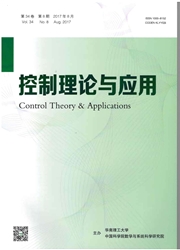

 中文摘要:
中文摘要:
针对常规场景识别方法在室内环境中性能显著下降的问题,提出一种融合全局及显著性区域特征的移动机器人室内场景识别方法.利用改进的BoW(bag-of-words)模型进行室内场景判别的同时,结合视觉注意方法提取出场景图像的最大及次大显著区域,送入改进的BDBN(bilinear deep belief network)模型来自动学习图像特征,进行类别判断.利用分段判别策略对于两个模型的结果进行融合,并输出最终场景判别结果.将本方法应用于实际机器人平台及包含67个类别的MIT室内场景数据库,实验结果表明,相较于常规BoW模型,本方法可以有效提高识别准确率10%以上.此外,本方法在MIT数据库中达到平均44.3%的准确率,优于相关文献算法.
 英文摘要:
英文摘要:
Conventional scene recognition methods have poor performance in indoor situations. For this reason, an indoor scene recognition method for mobile robots is presented, combining global and saliency region features. In addition to the use of an improved BoW (Bag-of-Words) model for indoor scene recognition, an improved BDBN (bilinear deep belief network) model is implemented, using information from a salient region detection technique. The first and the second winners of the salient region detection with the visual attention approach are sent into the improved BDBN model to automatically learn image features and to judge the class sets they belong to. The final result of the indoor scene recognition can be obtained by combining the above-mentioned two models through strategies for a piecewise discriminant. The method is applied to the real mobile robot platform and the standard MIT 67-category indoor scene dataset. The experiments show that the proposed method is highly effective, and can improve the accuracy of common BoW-based methods by up to 10%. In addition, the accuracy rate of the method can reach 44.3%in the MIT dataset, which is superior to some methods in the literature.
 同期刊论文项目
同期刊论文项目
 同项目期刊论文
同项目期刊论文
 Spatial-temporal Collaborative Sequential Monte Carlo for Mobile Robot Localization in Distributed I
Spatial-temporal Collaborative Sequential Monte Carlo for Mobile Robot Localization in Distributed I Decision-Theoretical Navigation of Service Robots Using POMDPs with Human-Robot Co-Occurrence Predic
Decision-Theoretical Navigation of Service Robots Using POMDPs with Human-Robot Co-Occurrence Predic 期刊信息
期刊信息
